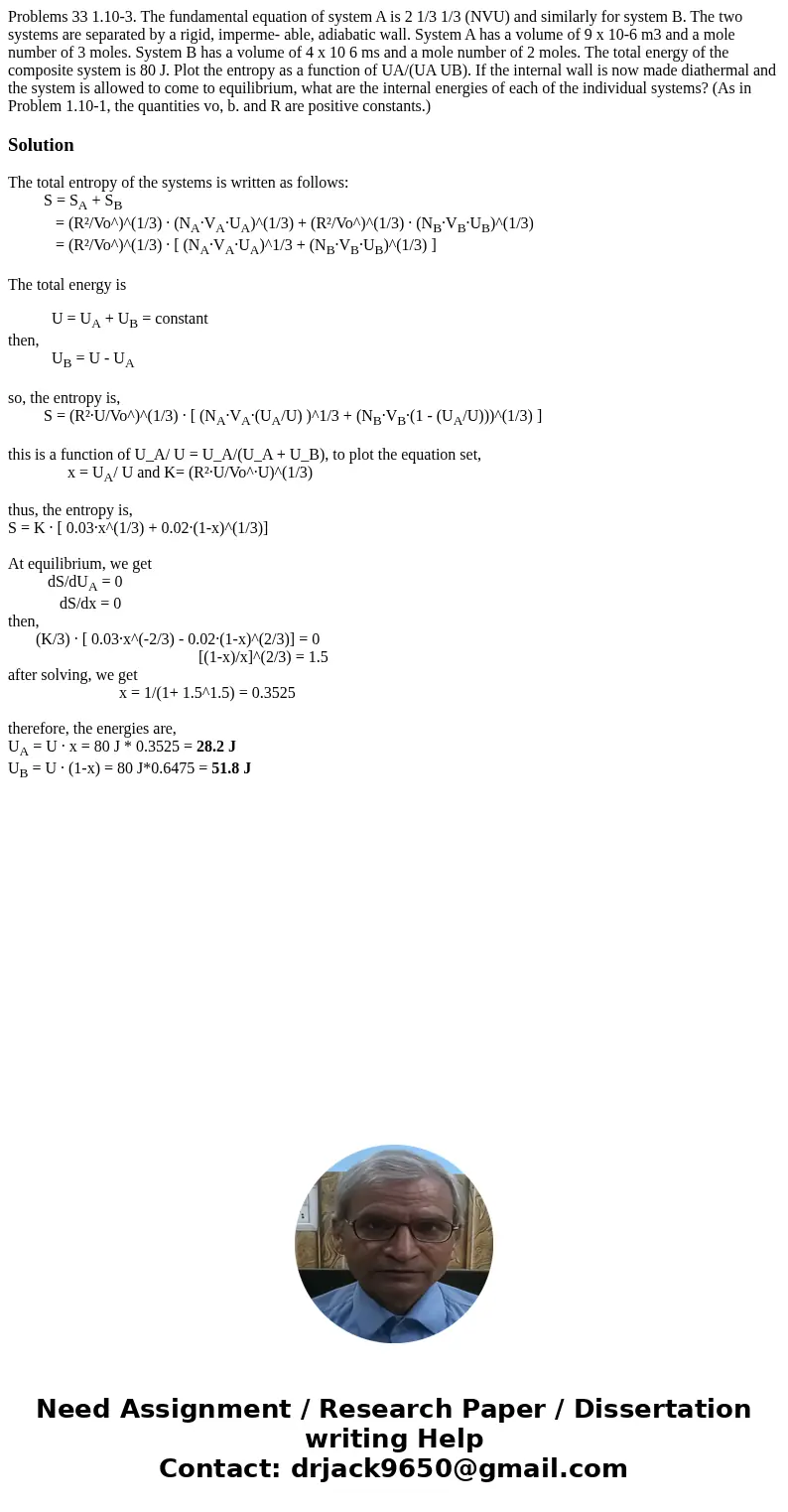Problems 33 1103 The fundamental equation of system A is 2 1
Solution
The total entropy of the systems is written as follows:
S = SA + SB
= (R²/Vo^)^(1/3) · (NA·VA·UA)^(1/3) + (R²/Vo^)^(1/3) · (NB·VB·UB)^(1/3)
= (R²/Vo^)^(1/3) · [ (NA·VA·UA)^1/3 + (NB·VB·UB)^(1/3) ]
The total energy is
U = UA + UB = constant
then,
UB = U - UA
so, the entropy is,
S = (R²·U/Vo^)^(1/3) · [ (NA·VA·(UA/U) )^1/3 + (NB·VB·(1 - (UA/U)))^(1/3) ]
this is a function of U_A/ U = U_A/(U_A + U_B), to plot the equation set,
x = UA/ U and K= (R²·U/Vo^·U)^(1/3)
thus, the entropy is,
S = K · [ 0.03·x^(1/3) + 0.02·(1-x)^(1/3)]
At equilibrium, we get
dS/dUA = 0
dS/dx = 0
then,
(K/3) · [ 0.03·x^(-2/3) - 0.02·(1-x)^(2/3)] = 0
[(1-x)/x]^(2/3) = 1.5
after solving, we get
x = 1/(1+ 1.5^1.5) = 0.3525
therefore, the energies are,
UA = U · x = 80 J * 0.3525 = 28.2 J
UB = U · (1-x) = 80 J*0.6475 = 51.8 J

 Homework Sourse
Homework Sourse